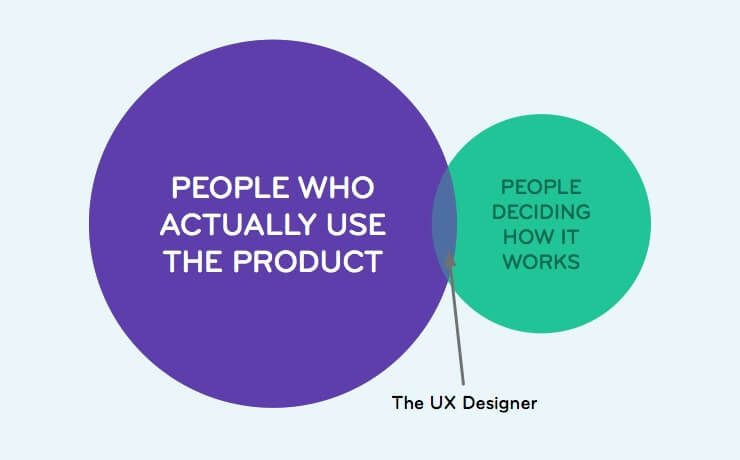Have You Tried Talking To Your Customers?

I remember daydreaming in the boardroom of a renowned university in Ireland while pretending to listen to a group of stakeholders argue over a label on a web form…
One side insisted that the users always call it an RFPN number while the other side was adamant it was simply the “RP Number”. The conversation was becoming increasingly heated with snide remarks and armchair politics entering the fray. One group asked for usability tests causing the other guys to turn to me aggressively. “I thought we hired YOU to solve this sort of problem“. I snapped out of my daydream quickly.
Both sides watched horrified as I went to the telephone in the corner of the room and started punching buttons labelled Maths, Arts, Sciences. I spoke with two professors who had never heard of the form, and three lecturers who knew of it but never completed it. Eventually I spoke to some research administrators and they knew exactly what I was talking about. After about 10 conversations my research findings concluded that it didn’t matter what label we used. No one fills in that part of the form. They didn’t even know what it was for.
Answers are everywhere
Anyone who works in UX has had this experience of watching clients fight over “What The Users Want™”, oblivious to the fact that they’re usually surrounded by them and could just ask. It’s oddly similar to how people are happy to discuss relationship problems with a radio DJ and her two million listeners, rather than, dare I say it, talk to their partner.
Even UX designers themselves are susceptible to this type of behavior. On the IXDA mailing list, a discussion forum for UX designers, a member asks “What research methods would help identify the reasons for members dropping off a website”. Jared Spool offered up the magical answer…

Talking to your customers is one of the most important things you can do as an app owner, so shouldn’t it be easy?
Return on Communication
I spend about 20-25% of my week talking with customers learning who they are, what their product does, where they were based, how often they use Intercom, how they found us, what they love, where they want to see improvements etc. Any question beginning with “I wonder if anyone…” inevitably makes it’s way into my next conversations with customers. Rather than guessing, debating, or testing there is so much value in just asking.
Aside from getting an in-depth knowledge of our customers and our product space, there are useful by-products of this exercise. Our customers seem to enjoy hearing from us, which strengthens the relationship and would blog/tweet to say it was great to receive a personal note, which in turn paves the way for customer testimonials
Email is often the wrong context
Any mailing list software shows that that no matter how well you write you’ll never get a great response rate. Even a good open rate is an achievement these days. And if anything it’s getting worse. About 30% of emails are now opened on mobile devices, by readers probably “doing email” from their couch during advertisement breaks. “We’ve launched a new widget.” Archive. “We’ve added new user profiles.” Archive. “Complete our customer satisfaction survey.” Archive.

If you were a chef wondering if customers are enjoying your new soup recipe, how would you find out? It’s not rocket science. The right time to ask customers about your soup is when they’re tasting your soup. The right time to ask customers about your web app is when they’re using your web app. Context is king for communication.
Customer Communication
Whether you call them product owner, evangelist, or community manager, every company should have someone talking to their customers regularly. It’s their job to know exactly what’s going with all types of customers, new, old, free, paying, trial, etc. It’s their job to find out what excites them, bothers them, triggers them to use it etc. They should be the goto for any “What-Ifs” and “I wonders” from the product team. This is how you spot issues before they cost you hard-earned customers. Metrics junkies are obsessed with details like Cost Per Acquisition, it’s worth remembering that investing in customer loyalty and retention can be equally valuable. Buckets fill up far quicker than sieves.
At a minimum you should be able to talk to your customers…
- Frequently: The more they talk with you, the more loyal they become.
- Easily: If it’s easy to do, chances are it’ll get done more often
- Openly: Let it be clear to your customers that they can complain or questions decisions, as their opinion is what matters
- In Context: Talk to users as they use your app, not outside of it in their inbox. The difference in what they say is remarkable.
Speculation is like Sketching
Ryan Singer wrote that “A little sketching is an exploration. A lot of sketching is a procrastination.” The same applies to cyclical debates about “the users” and “what they want”. It’s definitely useful for generating ideas, but that’s all. The quality of a product depends not just on the ability to generate ideas but also the ability to test and iterate through them based on good feedback.
Passionate well written arguments in favour of new features are similar to sexy wireframes and fancy sketches. They look great, but they’re no substitute for reality.







